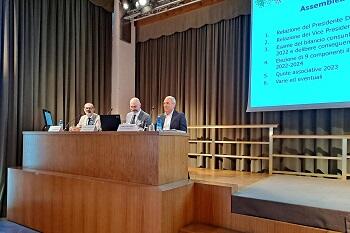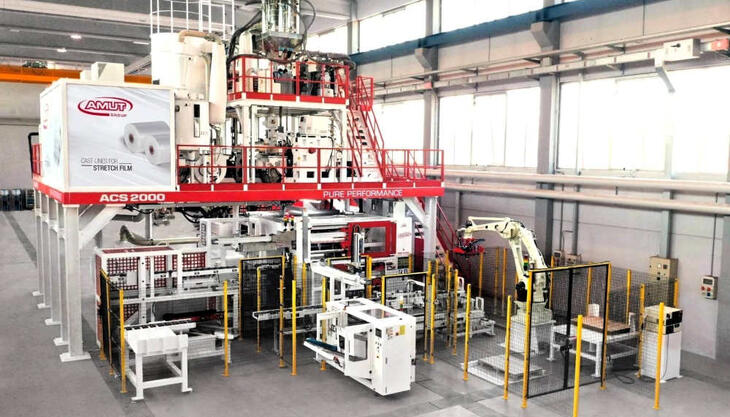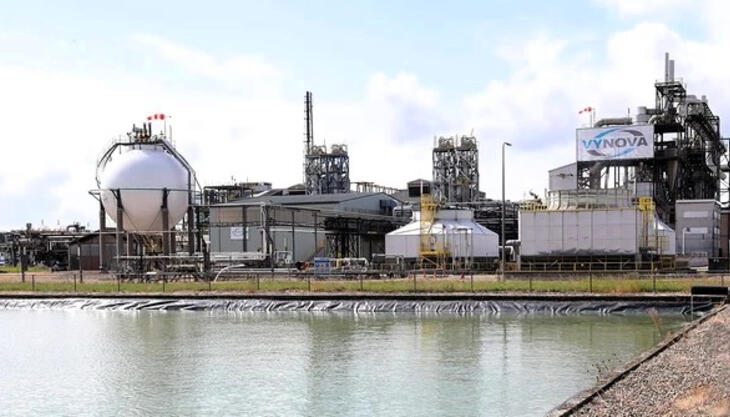Amaplast assembly: sector in positive but critical factors are persisting

The annual member assembly of Amaplast - national trade association, member of Confindustria, that unites some 170 Italian manufacturers of machinery, equipment, and moulds for plastics and rubber - took place on July 7, 2022, at Villa Borromeo in Cassano d'Adda (Milan). In his address, President Dario Previero illustrated the performance of the Italian industry of plastics and rubber processing machinery, commenting on the results of the second edition of the National Statistics Study by the Mecs-Amaplast Statistical Study Centre on 400 manufacturers (with 13,900 employees) who generated revenues of over 4 billion euros in 2021, a twelve percent increase over 2020 with a 72% share going to exports.
Very lively domestic demand - sustained by the Industria 4.0 incentives - and good performance in exports made it possible to return easily to pre-Covid levels and companies say they are moderately optimistic for the current year. Of course the degree and consolidation of the recovery are conditioned by well known negative factors characterizing economic reality, beyond the natural process of adjustment of the curve of supply and demand, after the spikes that followed the Covid crisis: increases in the costs of raw materials and energy, and especially the difficulty in obtaining components, the increase in transport fees, and international tensions, as well as the uncertainties associated with repeated waves of the pandemic.
These were the key themes in Previero’s talk, stressing that it is now indispensable that companies be able to adapt rapidly to the global context, now characterized by a sequence of disruptive events: emergencies seem to have become the new normal.
Previero went on to confirm the effectiveness of synergy with Acimac (Association of Italian Manufacturers of Machinery and Equipment for Ceramics) and Ucima (Italian Packaging Machinery Manufacturers Association), which has made it possible to share and make available a series of increasingly up-to-date and customized services to member companies, supporting them in their day-to-day operations.
His talk was followed by the round table discussion "Energy, Environment, Finance: the new paradigm".
 Sector data
Sector data
The second National Statistics Study by the Mecs-Amaplast Statistical Study Centre produces a snapshot of some 400 Italian manufacturers of plastics and rubber processing machinery, equipment, and moulds, employing more than 13,900 people and generating revenues of over 4 billion euros in 2021 (+12% over 2020). The average export ratio is 72%, with peaks of 82% for larger companies. And it is the companies in the category with turnover in excess of 50 million euros (less than 5% of the total) that made the greatest contribution to revenues (over 38% of overall revenues for the industry).
As regards geography, most of the companies (approximately 52%) are located in Lombardy, primarily in the provinces of Varese, Milan, and Brescia. Next in line are the regions of Emilia-Romagna with 15%, Veneto with 13%, and Piedmont with 9%.
As regards the customer categories of machinery manufacturers, packaging is again in first place, representing 41% of the total (27% food and 14% non-food), followed by automotive with 18%, and construction with 10%, just to mention the principal outlet markets. The medical segment also bears mentioning: although it amounts to a relatively small percentage of the total (5%, one point higher than in 2020), it recorded a rather non-surprising 38% increase in revenues for machinery suppliers.
In line with the results of the previous survey, among the macro-categories of machinery, extruders again represented the lion’s share of overall production, with 19% of the total. They are followed by auxiliaries with 14%, injection moulding machines at 11%, and moulds/dies for plastic at just under 8%.
The 2021 results are complemented by the indicators for the first quarter of 2022, which describe a continuing positive trend: with respect to the same period in 2021, orders are up by 10%, revenues by 16%, exports by 13%, and imports by 9%. Expectations for the second quarter are also marked by a certain optimism, at least as regards orders, estimated to have increased further by 6-7%. Naturally, various unknowns and issues that follow upon one another and have now been overlapping for months generate no small concern among business owners, who remain cautiously optimist, expecting the balance to be positive again in 2022, but less brilliant than last year.
 Fairs
Fairs
After the postponement to 2023 of the historical international Plast event due to the pandemic, the Amaplast service company Promaplast organized the first edition of Greenplast last May 3-6. The exhibition/convention was dedicated to the topics of environmental sustainability, energy efficiency, recover-reuse-recycle, and the circular economy.
Greenplast - taking place in concomitance with Ipack-Ima, Print4All, Intralogistica Italia, and Pharmintech as part of The Innovation Alliance - was particularly successful and earned acclaim from the 170 participating exhibitor companies. It attracted an impressive number of visitors (over 20,000 from 55 countries) and was characterized by the professionalism of the buyers visiting the stands, but especially by their awareness and sensitivity regarding the themes of the fair.
The event hosted the third edition of Packaging Speaks Green, an international forum sponsored by Amaplast and Ucima dedicated to the development of the culture of sustainability and circular economy in the plastics and packaging sectors, drawing in over 400 participants.
The upcoming edition of Greenplast has already been scheduled for May 27–30, 2025, again featuring The Innovation Alliance format.
In the meantime, the Plast organizational machinery has gone into operation: the nineteenth edition of the specialized fair in Milan will take place on September 5–8, 2023, and 30,000 square metres have already been reserved by over 600 currently registered exhibitors.
In parallel, the international calendar of trade fairs for the sector is being reworked, and Amaplast has a thick programme of participations in all geographical sectors, coordinating the Italian collective either in collaboration with ICE-Agenzia or with its own institutional stand. The first date on the calendar is K in Düsseldorf in October, featuring the presence of almost 400 Italian companies.
 Round table
Round table
The Amaplast member assembly concluded with a round-table discussion moderated by Giuseppe De Filippi, Vice Director of TG5 titled "Energy, Environment, Finance: the new paradigm", with addresses by Marco Fortis, Director and Vice President of Fondazione Edison, Guido Brera, Director of Investments and Co-founder of Kairos Partners Sgr, Alberto Castelli, Managing Director of Kairos Partners Sgr, and Paolo Quaini, Partner of Intellera Consulting.
Marco Fortis illustrated the strong points of Italian manufacturing as well as the critical issues characterizing the current context. In recent years, Italian industry has achieved equilibrium and gained strength and our economy has proved to be remarkably solid even with respect to the most destabilizing events, maintaining better indices than those of many European and world competitors.
Guido Brera offered his thoughts on the true meaning of the ESG paradigm: Environment, Social, and Corporate Governance, underscoring the fact that there are no toxic sectors per se. What matters is the behaviour on the market; even the segments most subject to scrutiny may display virtuous behaviours in full respect for ESG criteria.
Alberto Castelli called attention to the fact that sustainable finance is by now an irreversible trend and all investment funds have adopted a policy of evaluation of sustainability. Companies have to see this as an opportunity for business, orienting themselves to the redesign of production chains.
Paolo Quaini outlined the trend in the cost of energy, suggesting that current levels may hold for a number of years. As a consequence, the only way for companies not to lose competitivity is to adopt sustainable solutions; in particular machinery manufacturers should offer technologies that make it possible to diversify energy sources. Those who adopt an ESG approach are able to discern risks and opportunities before others.



















